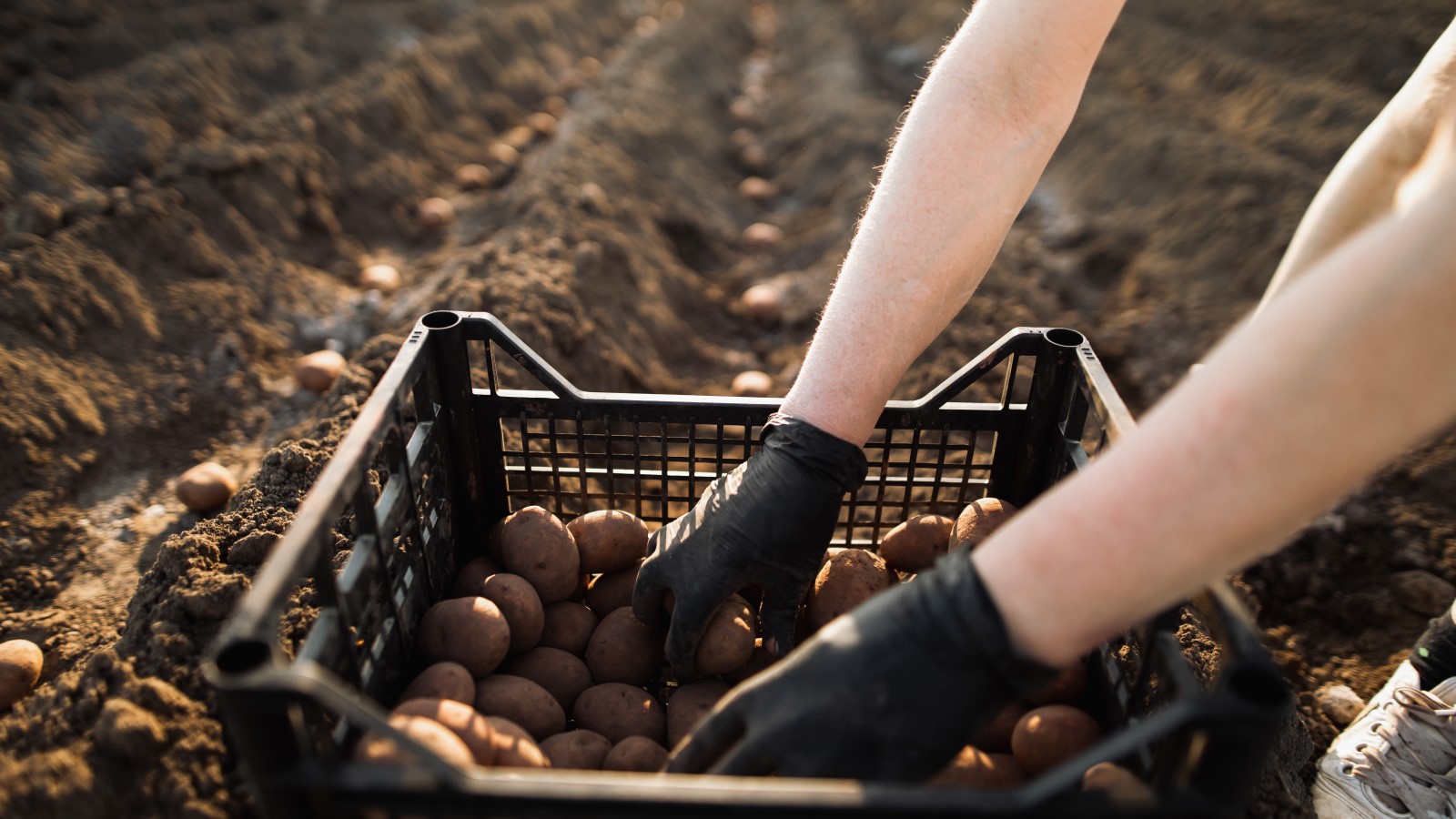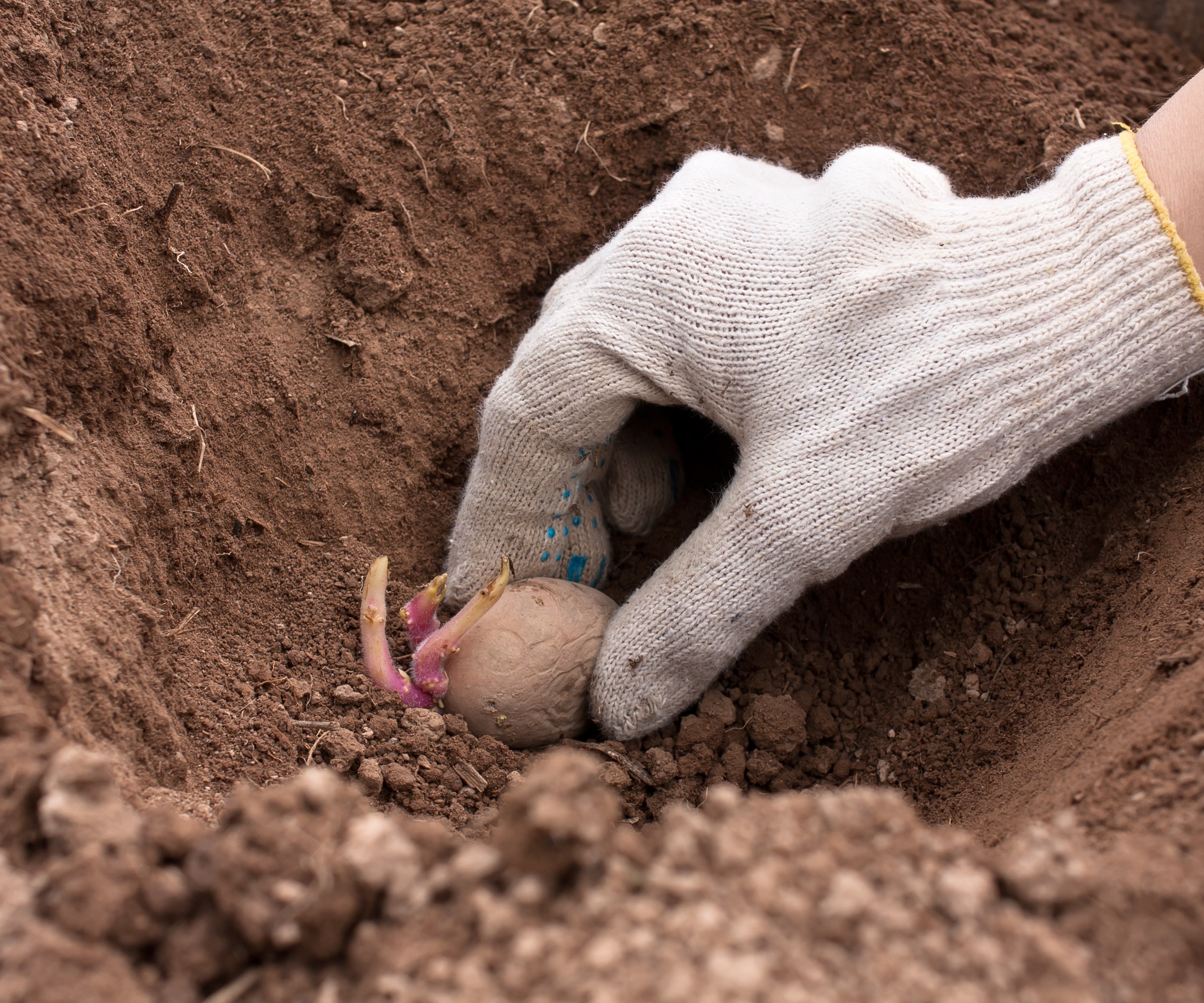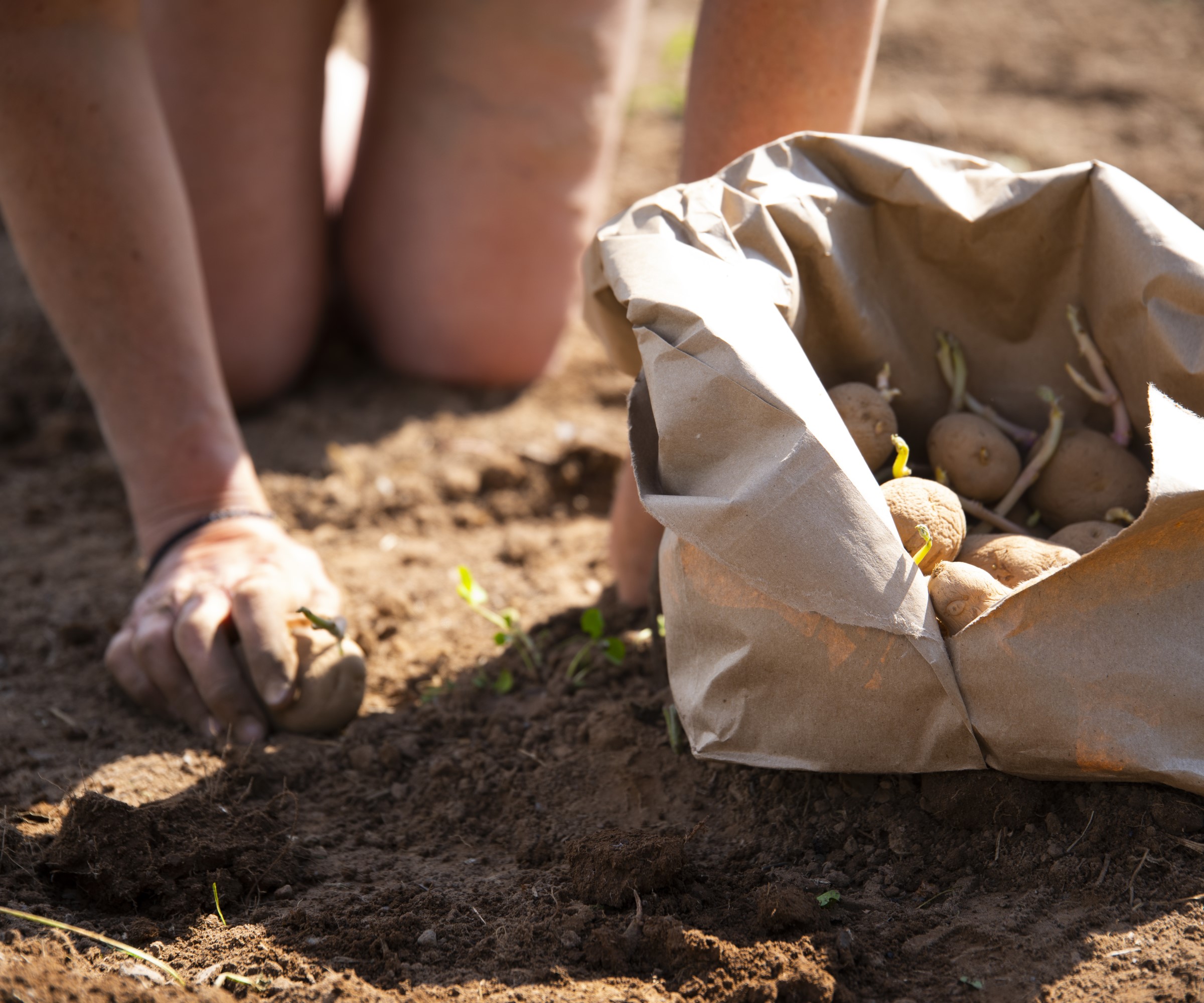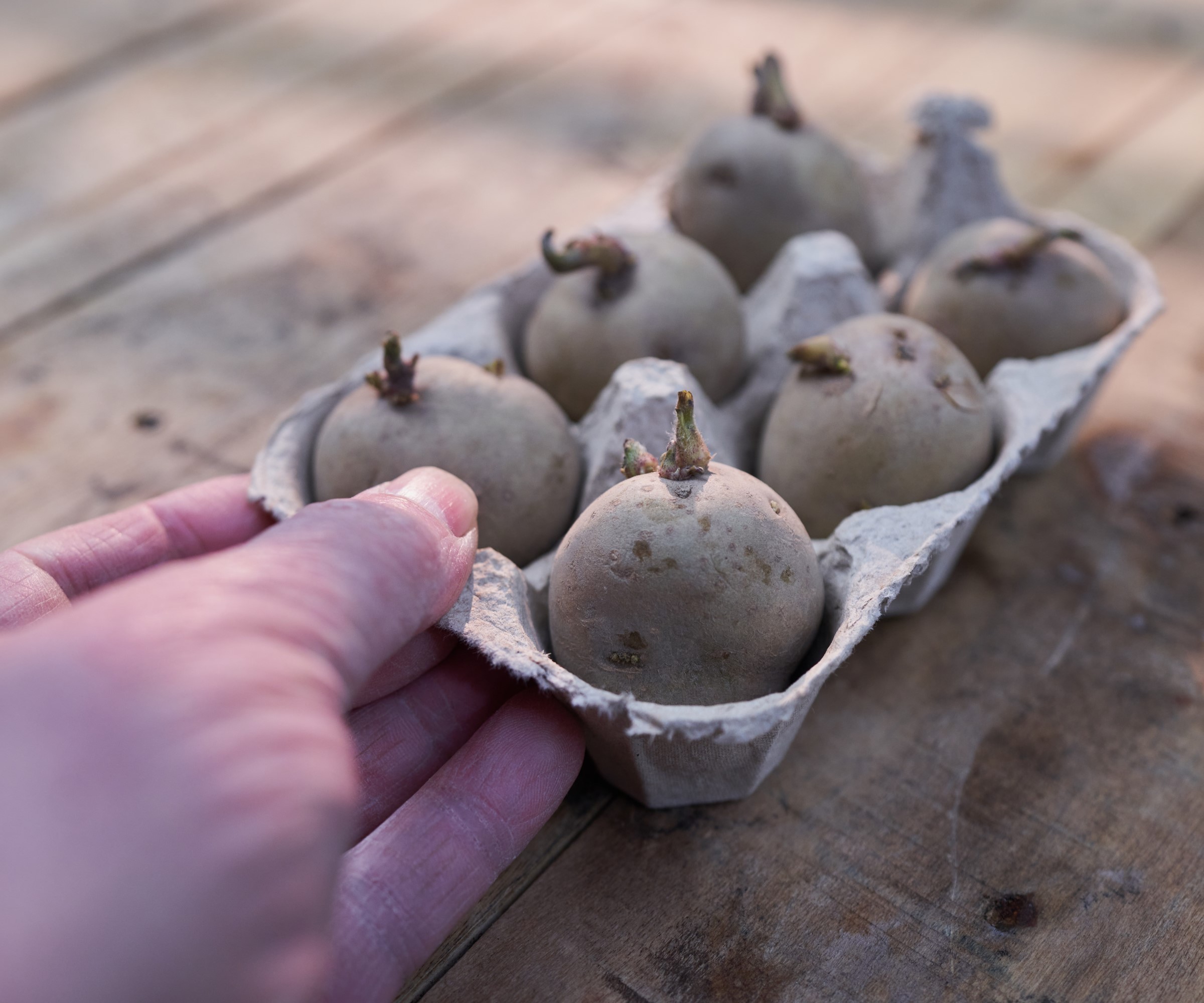5 potato planting mistakes that can destroy your crop – and how to avoid them
Learn how to steer clear of these planting mistakes with simple measures to prevent your yield being ruined


Potatoes are a simple crow to grow, however that doesn’t mean guaranteed success as there are common potato planting mistakes you need to avoid. Any, or all, of them have the potential to make a huge impact on your potential crop.
Tubers can be planted too early, too close, or too shallow. They can be planted without eyes and they can be overwatered. These mistakes can be down to a multitude of factors, including the likes of inexperience, impatience, or overzealousness.
If you want to learn how to grow potatoes, then don’t fall foul of any of these common planting mistakes. Know what to avoid and you have the tools to reap a fantastic harvest of homegrown potatoes.

Potatoes are a staple crop in vegetable gardens

Drew is a former professional gardener who specialized as a kitchen gardener, growing vegetables for chefs and also to sell to the public. He has grown different varieties of potatoes for over a decade in walled garden beds, raised vegetable beds, and containers.
Potato planting mistakes you need to avoid
Potatoes can be grown in a kitchen garden, vegetable plot, pots or bags. You can even grow potatoes in a bucket. The following common mistakes are applicable for all situations and can mean a disappointing crop. In order to avoid regret when you come to harvest your potatoes, make sure to steer clear of these common errors.
1. Planting too close
A frequent potato planting mistake often comes from a thinking that more plants will always result in a bigger harvest. However, this is not the reality as packing in more seed potatoes will result in smaller plants and a smaller yield.
Dominique Kline, Farm Manager at The Hope Farm in Fairhope, Alabama, says that growing potatoes is ‘an art of balance’ that starts with the correct planting distance.
‘Planting too closely can lead to a range of issues stemming from nutrient deficiency. When plants compete for nutrients, they collectively fail to thrive, leading to legginess, deformation, and stunted growth,’ says Dominique.
Design expertise in your inbox – from inspiring decorating ideas and beautiful celebrity homes to practical gardening advice and shopping round-ups.
‘Potatoes, on average, prefer a distance of 12-15 inches between plants and 24-26 inches between rows.’
The exact spacing required is dependent on the types of potatoes you are growing. Early season varieties of potatoes are harvested smaller in size and can be planted 12 inches apart, while mid and late season types are left in the ground for longer, to grow larger. These types need a larger spacing of 15 inches between plants.
When growing potatoes in containers, also ensure not to pack in too many seed potatoes in the hunt for a larger yield. For example, a 5-gallon container is large enough for two plants, rising to five in a 10-gallon container.

Potatoes need a spacing of at least 12 inches
2. Planting too shallow
As well as planting too close together, planting seed potatoes too close to the surface can cause many problems. Ideally, potatoes want to be planted in a trench 6-8 inches deep and have around 4 inches of soil on top of them. As the plants grow, the potatoes are mounded up.
If potatoes are planted too close to the surface, they can end up exposed to the sunlight and this can turn them green – leaving them inedible. Potatoes too close to the soil surface also leaves them more vulnerable to pests.
On the opposite side of the issue, plant your potatoes too deep and the seed potato faces sitting in colder and wetter soil. This can delay the emergence of the plant or even result in them rotting and ultimately dying.

Potatoes should be planted 6 inches deep
3. Planting too early
Every year there is a rush to get crops planted out as quickly as possible. It is very easy to fall foul of false early springs or succumb to unexpected late frosts.
Dominique from The Hope Farm heralds that ‘patience is a virtue’ in agriculture and tells growers that the restraint to wait for the right time to plant your potatoes will be rewarded with a healthy harvest.
'Optimal growth in potato plants begins when soil temperature reaches 45˚F. It’s always advisable to check what’s appropriate for your zone – in colder climates, 40˚F is an ideal planting temperature, and in warmer climates, 60-65˚F may be ideal.
‘Planting too early when there is still risk of heavy frost may damage young tubers and foliage. If the weather in your area is still fluctuating heavily, it’s best to wait.’
The exact time of when to plant potatoes does vary by region. Early season potatoes tend to be planted in early spring, while mid season types are a few weeks after the early potatoes and late season potatoes are planted at the end of spring.

Early seed potatoes should be chitted 4-6 weeks before planting
4. Planting potatoes without eyes
‘Eyes’ are the place on the potatoes from where sprouts emerge from and beginner gardeners can forget to check for eyes when they buy seed potatoes from garden centers. If the potatoes do not have eyes, they are highly unlikely not to sprout.
Even if there are ‘eyes’ on the potatoes it can be easy to accidentally damage the sprouts before planting. By chitting potatoes you force a seed potato to start growing, usually 4-6 weeks before planting it out in the garden. These sprouting potatoes need to be handled carefully to ensure no sprouts are broken or rubbed off.
Some growers cut their seed potatoes into smaller chunks in order to have more to plant, and ultimately get a bigger harvest. It is important to make sure that every section of chopped potato has 'eyes', otherwise they will not sprout when planted in the ground.
Many people try planting potatoes from one they bought at a grocery store, and that method of trying to grow a potato from a potato can come with unexpected issues. Potatoes sold in stores for eating are often treated with chemicals to stop them sprouting, so many never germinate. These store-bought potatoes also come with risk of introducing diseases into your vegetable garden. It is always recommended to use certified disease-free seed potatoes.

Take care not to damage sprouts when planting out seed potatoes
5. Overwatering after planting
Overzealous watering after planting seed potatoes can cause real problems and potentially lead to a complete loss of the crop. The worst case scenario is that too much water can cause the potatoes to rot in the waterlogged soil. Potatoes do like growing in constantly moist soil, but sitting in very wet ground, especially in periods of cold, can leave them to decay due to a lack of oxygen for respiration. Over-watering can also lead to tubers becoming mis-shaped and an increased risk of powdery scab.
Potatoes tend to need an inch or two of water each week, from a combination of rainfall and additional watering. Knowing when to water the plants is key, it is recommended to stick your fingers into the soil to a depth of about 6 inches to gauge the moisture levels.

Drew has worked as a writer since 2008 and was also a professional gardener for many years. As a trained horticulturist, he worked in prestigious historic gardens, including Hanbury Hall and the world-famous Hidcote Manor Garden. He also spent time as a specialist kitchen gardener at Soho Farmhouse and Netherby Hall, where he grew vegetables, fruit, herbs, and cut flowers for restaurants. Drew has written for numerous print and online publications and is an allotment holder and garden blogger. He is shortlisted for the Digital Gardening Writer of the Year at the 2025 Garden Media Guild Awards.